Although there are several very good review sites on the web for digital cameras they don't tend to cater image wise for the microscopist so it is hard to judge the results when considering a purchase. Since I have recently bought the Nikon Coolpix 4500 I thought it may be of interest to show some of my pictures to people who may be considering it for use with the microscope or for natural history close-up work.
The following macro images where all hand held with the main settings as below:
- Shutter priority with speeds ranging from 1/125th-1/500th.
- Centre weighted metering.
- Original image size 1024x768 pixels.
- Image quality set to Fine.
- Post image editing with Photoshop Elements include re-sizing, contrast correction where required for slight under or over exposure and slight image sharpening using the un-sharp mask due to reduction of image size.
Please click on images for a larger view!
|
|
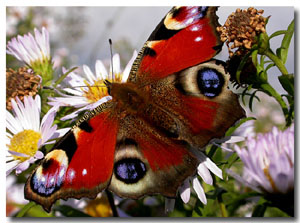 |
|
|
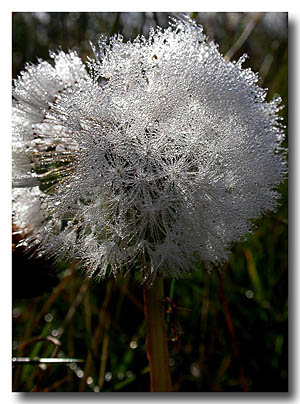 |
|
|
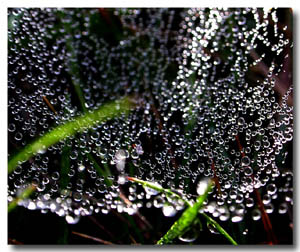 |
|
|
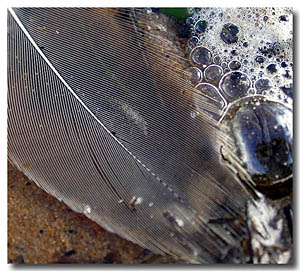 |
All the following microscope images were hand held with the Nikon 4500 held up to the 7x Russian eyepiece of my Lomo Bimam R13 microscope - not ideal. [The eyepiece just fits within the 28 mm barrel without touching the multicoated protection cover of the Nikon]. The results therefore from a proper adapter should be very good!
- The camera settings are basically as for the macro shots but minimum time down to 1/30th second in dark field.
- Optical zoom set to maximum to minimize vignetting.
- Camera allowed to auto-focus if possible, again with centre weighted metering, manual over ride on less contrasty shots.
- I have found that for my Bimam microscope with the lamp near full intensity and using a microscope blue filter, that a good white was obtained for most images using the 'Auto White Balance' setting. The white balance can be adjusted in 'Preset Mode' if desired.
- Objectives, Lomo 10x NA 0.3 and 25x NA 0.5.
- The ascorbic acid [vitamin C] slide below, taken in dark field illumination, was prepared by Mike Samworth.
Please click on all microscope images for a
larger view!
|
|
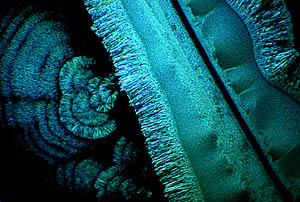 |
|
|
 |
|
|
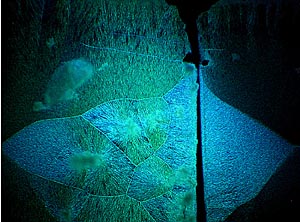 |
Shells and diatoms, the following
images where again taken with the Nikon held up to my 7x eyepiece but now
using:
- Lomo 25x NA 0.5 and Carl Zeiss 40x NA 0.65 objectives.
- Bright field shots are around 1/125th second.
- Bright field diatom shots changed from colour to grey scale in Photoshop Elements, black and white can also be selected on the Nikon.
- The diatom images were selected from strew slides prepared by Klaus Kemp in high refractive index 'Pleurax'. To visit his web site click here
- The shells slide was prepared by Brian Darnton.
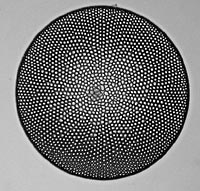 |
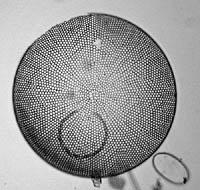 |
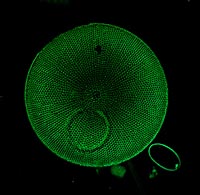 |
And finally...........
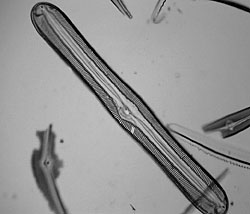 |
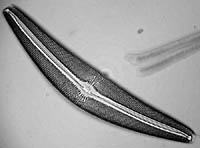
This image shows what appears to Newton's rings, which occurred under some conditions. These were minimised by reducing the light intensity and increasing exposure. |
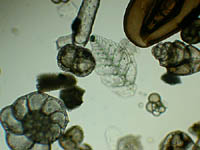 |
All comments to the author
Ian
Walker are welcomed.
Related Micscape articles:
The Coolpix 4500 has the same basic
design as the Coolpix 9xx series. Vishnu Reddy's articles below describe
his use of a versatile homemade adaptor for microscopy / extended macroscopy
with the Coolpix 990.
Photomicroscopy
with a Nikon Coopix 990 digital camera.
Reflected
and transmission macrophotography with a Coolpix 990 camera using 35 mm
camera macro equipment and lenses.
Also see Jan Parmentier's super gallery
of diatom images taken using a Coolpix 990.
Diatoms,
a gift from Antwerp.
External review sites
There are a number of excellent
review sites of digital cameras. Two of the most extensive are DPreview
and Imaging Resource.
Microscopy
UK Front Page
Micscape
Magazine
Article
Library
© Microscopy UK or their contributors.
Please report any Web problems or
offer general comments to the
Micscape
Editor,
via the contact on current Micscape
Index.
Micscape is the on-line monthly magazine
of the Microscopy UK web
site at Microscopy-UK